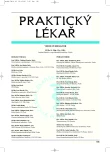Psychotherapy in neuroimagins methods of CNS
Authors:
A. Večeřová-Procházková 1,2; M. Konečný 1
Authors‘ workplace:
Psychiatrická ambulance, Sněmovní 1, Praha
1; Katedra psychiatrie IPVZ, Ústavní 91, Praha
2
Published in:
Prakt. Lék. 2006; 86(4): 224-226
Category:
Biopsychosocial relations
Overview
Psychotherapy is an effective method used to decrease emotional distress. The recent studies using neuroimaging methods bring an evidence of similar changes in CNS in depression, stress and traumatic disorders and eating disorders. The functional and structural consequences of stress in CNS result in clinical symptoms of stress reactions, as we know it in our patients. The article explains the heuristic model of neurobiological mechanisms of trauma and retraumatization formulated on base of recent neuroimaging studies. The conscious processing and reprocessing of emotional experiences is a key factor of relapse prevention in depression and posttraumatic stress disorder. The effective psychotherapy leads to normalization of metabolism of basic structures CNS, especially the limbic system and parahippocampal region, insula and prefrontal cortex. Psychotherapy is able to change the function of the brain and boosts the functioning of these structures of the brain enabling to better equalize the emotional disturbance and more effectively process the recent incoming stimuli.
Key words:
Psychotherapy – neurobiological mechanism – trauma – retraumatization
Labels
General practitioner for children and adolescents General practitioner for adultsArticle was published in
General Practitioner

2006 Issue 4
Most read in this issue
- A rare tunnel syndrome in the lower extremities.
- Prognostic and predictive factors in prostate cancer
- Social differences and population health.
- Psychotherapy in neuroimagins methods of CNS
